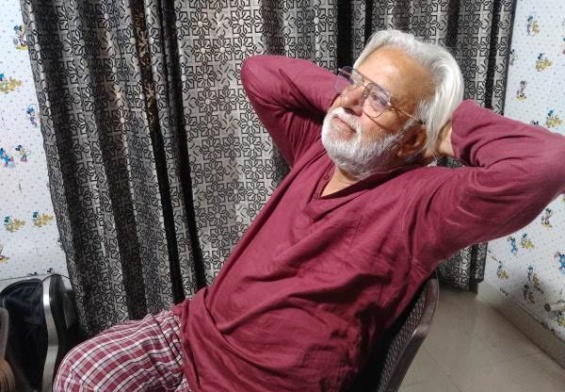January 4 is World Braille Day
Touch and feel of six raised dots helped visually impaired to bridge gap in communication
World Braille Day (WBD) is observed on January 4 to mark the birth anniversary of Louis Braille, the Frenchman who invented the code in 1821. Louis Braille, who was blinded in an accident at a very young age, invented braille through his zest for learning. In fact, the Braille helps to provide equal opportunity visually impaired people worldwide now as tool for learning.
There was a time, not long ago, when most people thought that blind people could never learn to read. People thought that the only way to read was to look at words with your eyes.
A French boy named Louis Braille thought otherwise. Blind from the age of three, Louis desperately wanted to read. He realized the vast world of thought and ideas that was locked out to him because of his disability. And he was determined to find the key to this door for himself, and for all other blind persons.
There was a time, not long ago, when most people thought that blind people could never learn to read. People thought that the only way to read was to look at words with your eyes.
A French boy named Louis Braille thought otherwise. Blind from the age of three, Louis desperately wanted to read. He realized the vast world of thought and ideas that was locked out to him because of his disability. And he was determined to find the key to this door for himself, and for all other blind persons.
Braille is a standard code that uses bumps and indentation on a surface to represent alphabets and numerals which can be recognized by touch. To begin with, Louis Braille’s code was arranged in small rectangular blocks called cells with raised dots in a 3 x 2 pattern that represented an alphabet, number or punctuation.
Now, it is available on paper and is being used in all languages and subjects like basic mathematics, music and computer programming. Learning materials and books in braille have also been an integral part of inclusive education in many countries.
As Louis sat there in his father’s leather shop, he picked up one of the blunt awls. The idea came to him in a flash. The very tool which had caused him blindness could be used to make a raised dot alphabet that would enable him to read.
The first form of writing by means of dots is attributed to Charles Barbier, an artillery officer. He developed an interest in rapid, secret writing as it pertains to matters of war, where speed and secrecy are mandatory.
Barbier invented a method of “cutting out” writing with a pen knife. This method made it possible to scribe several copies at once. Barbier’s experience may have made him aware of the benefit to an officer able to write messages in the dark and decipher them with his fingers.
Louis was about 12 years old when Charles Barbier brought his writing system, called ‘sonography’ to the school. Louis saw the potential as well as the problems with the system. The Barbier system was based on a 12-dot cell and phonetic soundings.
Over the next three years, Louis worked on simplifying the system, which is how the 6-dot braille system came into being. He eventually evolved his new system to include notation for numbers and music.
The next few days he spent working on an alphabet made up entirely of six dots. The position of the different dots would represent the different letters of the alphabet.
Braille’s determination and struggle to design a system of reading and writing that could bridge the gap in communication between the sighted and the visually impaired led to the development of a viable code to be read through touch.
The World Blind Union (WBU), a global organization representing the estimated 285 million people worldwide who are blind or partially sighted, has partner organizations working for the blind in 190 countries. The UN Convention of the Rights of Persons with Disabilities states that persons with disabilities have the right to full and effective enjoyment of all human rights and are required to be included in development agenda in all countries.
The first form of writing by means of dots is attributed to Charles Barbier, an artillery officer. He developed an interest in rapid, secret writing as it pertains to matters of war, where speed and secrecy are mandatory.
Barbier invented a method of “cutting out” writing with a pen knife. This method made it possible to scribe several copies at once. Barbier’s experience may have made him aware of the benefit to an officer able to write messages in the dark and decipher them with his fingers.
Louis was about 12 years old when Charles Barbier brought his writing system, called ‘sonography’ to the school. Louis saw the potential as well as the problems with the system. The Barbier system was based on a 12-dot cell and phonetic soundings.
Over the next three years, Louis worked on simplifying the system, which is how the 6-dot braille system came into being. He eventually evolved his new system to include notation for numbers and music.
The next few days he spent working on an alphabet made up entirely of six dots. The position of the different dots would represent the different letters of the alphabet.
Braille’s determination and struggle to design a system of reading and writing that could bridge the gap in communication between the sighted and the visually impaired led to the development of a viable code to be read through touch.
The World Blind Union (WBU), a global organization representing the estimated 285 million people worldwide who are blind or partially sighted, has partner organizations working for the blind in 190 countries. The UN Convention of the Rights of Persons with Disabilities states that persons with disabilities have the right to full and effective enjoyment of all human rights and are required to be included in development agenda in all countries.
On the occasion of WBD, general public as well as the United Nations, Member States, civil society organizations and other relevant stakeholders are urged to ensure the full and effective inclusion of persons with disabilities in development framework.
Louis contracted tuberculosis at the age of 26. In early December 1851, Louis began to hemorrhage. This was attributed to a cold but got progressively worse. He died on January 6, 1852, at the age of 46.
To mark his death centenary in 1952, the French government moved Louis’ body to the Pantheon in Paris in recognition of his contribution to improving the quality of life of the visually impaired.
Louis contracted tuberculosis at the age of 26. In early December 1851, Louis began to hemorrhage. This was attributed to a cold but got progressively worse. He died on January 6, 1852, at the age of 46.
To mark his death centenary in 1952, the French government moved Louis’ body to the Pantheon in Paris in recognition of his contribution to improving the quality of life of the visually impaired.




